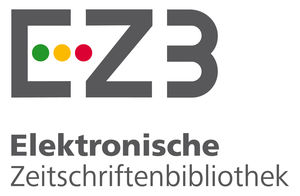Mathematical aspects of the n-queens problem and the construction of knowledge by Computer Science students
DOI:
https://doi.org/10.23925/1983-3156.2024v26i1p642-667Keywords:
Pattern generalization, N-queens problem, Theory of didactic situations, Didactic engineering, Computer scienceAbstract
This article reports qualitative research, which had as subjects a group of students from a higher education course in Computer Science, with the proposal of solving an issue related to the n-queens problem, a generalization of the original problem, which consisted of having 8 queens on a chessboard, considering different positions, so that the pieces do not capture each other. The specific didactic sequence consisted of proposing a generalization whose application provides the number of diagonals to be considered for solving the problem on any n-by-n board, with n greater than 3. Based on the assumptions of Didactic Engineering, and having as main theoretical supports the Theory of Didactic Situations (TSD) and the work of Zazkis and Liljedahal on close and distant generalizations, the students developed an autonomous investigative trajectory, based on collaborations, to present acceptable solutions to the proposed problem. The results allow us to infer that the experience around solving mathematical problems is relevant as a learning resource in higher education Computer Science courses, considering a scenario of intensive use of digital technologies.
References
Abramson, B., & Yung, M. (1989). Divide and conquer under global constraints: a solution to the N-Queens problem. United States. https://doi.org/10.1016/0743-7315(89)90011-7
Barquero, B., & Bosch, M. (2015). Didactic Engineering as a Research Methodology: From Fundamental Situations to Study and Research Paths. In: Watson, A. e Ohtani, M. (Eds.). Task Design in Mathematics Education: New ICMI Study Series). 10.1007/978-3-319-09629-2_8.
Brasil, Ministério da Educação, Conselho Nacional de Educação, Câmara de Educação Superior. (2016). “Resolução Número 5, de 16 de novembro de 2016”. Ministério da Educação. http://portal.mec.gov.br/index.php?option=com_docman&view=download&alias=52101-rces005-16-pdf&category_slug=novembro-2016-pdf&Itemid=30192.
Brousseau, G. (2002). Theory of Didactical Situations in Mathematics: didactique des mathématiques, 1970–1990. Dordrecht: Kluwer Academic.
Echeverría, M. D. P. (1998). A solução de problemas em matemática. In: POZO, J. I. (org.). A solução de problemas: aprender a resolver, resolver para aprender. Porto Alegre: ArtMed. 44-65.
El Abidine, B. Z. (2023). An incremental approach to the n-queen problem with polynomial time. Journal of King Saud University – Computer and Information Sciences, 35. 1 – 7. https://doi.org/10.1016/j.jksuci.2023.02.002
Gent, I.P., Jefferson, C., & Nightingale, P. (2017). Complexity of n-Queens Completion. Journal of Artificial Intelligence Research, 59. 815 – 848. https://doi.org/10.1613/jair.5512
Gersting, J. L. (1999). Fundamentos matemáticos para Ciência da Computação. 4. ed. LTC: Rio de Janeiro.
Hamilton, E. (2007). “What changes are needed in the kind of problem-solving situations where mathematical thinking is needed beyond school?”. Foundations for the Future in Mathematics Education. Editors R. Lesh, E. Hamilton, and Kaput (Mahwah, NJ: Lawrence Erlbaum), 1–6.
Klang N., Karlsson N., Kilborn W., Eriksson P., & Karlberg M (2021). Mathematical Problem-Solving Through Cooperative Learning – The Importance of Peer Acceptance and Friendships. Frontiers in Education, 6. 10.3389/feduc.2021.710296.
Kondrak, G., Van Beek, P. (1997). A theoretical evaluation of selected backtracking algorithms. Artificial Intelligence, 89 (1-2). 365 – 387. https://doi.org/10.1016/S0004-3702(96)00027-6
Mitchell, M. (1999). An introduction to genetic algorithms. 5. ed. Cambridge: MIT Press.
Morais, C. G. B., Mendes Neto, F. M., & Osório, A. J. M. (2020). Difficulties and challenges in the learning process of algorithms and programming in higher education: a systematic literature review. Research, Society and Development, 9(10), e9429109287. https://doi.org/10.33448/rsd-v9i10.9287
Oliveira, G. P. (2018). Sobre tecnologias e Educação Matemática: fluência, convergência e o que isto tem a ver com aquilo. In Oliveira, G. P. (Org.). Educação Matemática: epistemologia, didática e tecnologia. São Paulo: Editora Livraria da Física.
Oliveira, G. P., Mastroianni, M.T.R. (2015). Resolução de problemas matemáticos nos anos iniciais do Ensino Fundamental: uma investigação com professores polivalentes. Revista Ensaio, 17 (2). 455-482. http://dx.doi.org/10.1590/1983-21172015170209
Osaghae, E. O. (2021). Solution to n-Queens Problem: Heuristic Approac. Transactions on Machine Learning and Artificial Intelligence, 9(2). 26-35.
Ponte, J. P., Boavida, A., Graça, M., e Abrantes, P. (1997). Didáctica da matemática: Ensino secundário. Lisboa: Ministério da Educação, Departamento do Ensino Secundário.
Zazkis, R. & Liljedahal, P. (2002). Generalization of patterns: the tension between algebraic thinking and algebraic notation. Educational Studies in Mathematics, 49, 379-402.
Downloads
Published
How to Cite
Issue
Section
License

This work is licensed under a Creative Commons Attribution-NonCommercial-NoDerivatives 4.0 International License.
Autores que publicam nesta revista concordam com os seguintes termos:- Autores mantém os direitos autorais e concedem à revista o direito de primeira publicação, com o trabalho simultaneamente licenciado sob a Licença Creative Commons Attribution que permite o compartilhamento do trabalho com reconhecimento da autoria e publicação inicial nesta revista.
- Autores têm autorização para assumir contratos adicionais separadamente, para distribuição não-exclusiva da versão do trabalho publicada nesta revista (ex.: publicar em repositório institucional ou como capítulo de livro), com reconhecimento de autoria e publicação inicial nesta revista.
- Autores têm permissão e são estimulados a publicar e distribuir seu trabalho online (ex.: em repositórios institucionais ou na sua página pessoal) a qualquer ponto antes ou durante o processo editorial, já que isso pode gerar alterações produtivas, bem como aumentar o impacto e a citação do trabalho publicado (Veja O Efeito do Acesso Livre).













